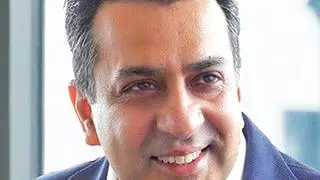As the competition in the global handset market intensifies with the entry of a number of new players, incumbent phone manufacturers such as Sony Ericsson are feeling the heat.
During the second quarter in 2011, the company ended with a net loss of €50 million, with 7.6 million units shipped compared with €11 million profit and 8.1 million units shipment last quarter and €12 million profit and 11 million units shipment in Q2 2010.
Sony Ericsson is now betting on its new range of phones on the Android platform to revive its fortunes. Business Line caught up with Steve Walker, global head of marketing at Sony Ericsson Mobile Communications, recently in Singapore to talk about the company's strategy.
There are a number of handset makers using the Android platform so how different can Sony Ericsson become?
We want to qualify our phone with the right Android attributes. We focus on some of the hygiene factors, such as go-to-market strategy, strong processor performance and battery life. We then add wonderful entertainment capabilities that come from Sony. There is no Playstation certified phone apart from Sony Ericsson. So that's a large area of differentiation.
Then, it's the design and the brand itself. Each mobile phone has its unique design and is most popular in all aspirational consumer markets. So people buy our brand because they like the way we have designed products. It's the design of the hardware and software, which is the soul of Sony entertainment capabilities, that we bring to the table.
We don't hear Sony Ericsson partnering with many operators globally and even in India. What is the reason for this?
Not really. In the US we work in collaboration with AT&T extensively. We recently started selling Android smartphones to Verizon, which is the biggest Android telco in the US market.
Across Europe, we have had long relationships with every single telco. The India market for handsets has not been based on telco relationships. It has been more of a trade and distribution-led market. But we absolutely know how to do telco relationships and that's the way we run our business in other parts of the world.
Will the advent of 3G open up the market for you in India?
3G does create a change in the way the game is played. And of course, companies have a bigger role to play as there is a big shift when more and more people embrace mobile Internet and clearly that's happening in India. We have been waiting for 3G to happen in India for a long time. Now that's happened and it's an opportunity for us. It's important that when you grow your business, you can't grow everywhere at the same moment. You have to pace your growth so that you can afford to grow. That's what we are doing.
There are a number of local players who are incorporating more multimedia features on entry-level handsets. Do you see a threat from them?
I think Sony Ericsson's ambition is not to start at the bottom of the market. We are a premium brand. Of course, those companies changed the face of the market, but the telecom market changes rapidly all the time. It's also important to look at where the value in the market is. India is a volume market, but the low-price high-volume segment accounts for a small proportion of the total value. We are embracing the segment where people are paying for additional capabilities and features. Sony Ericsson excels where people want something extra.
Sony Ericsson had earlier talked about setting up a manufacturing plant in India in 2007. Is there a rethink on the plan?
We have had a development site in Chennai for a while. But of course, we were making losses for a year or so. We needed to rationalise our business and focus on achieving financial stability in 2009-10. We turned around the company and we have enjoyed five quarters of profitability. We are heading for a growth phase. We see the opportunity in India. We needed to create a financially stable business situation, which we have done, and now we are assessing the opportunities in the market.








Comments
Comments have to be in English, and in full sentences. They cannot be abusive or personal. Please abide by our community guidelines for posting your comments.
We have migrated to a new commenting platform. If you are already a registered user of TheHindu Businessline and logged in, you may continue to engage with our articles. If you do not have an account please register and login to post comments. Users can access their older comments by logging into their accounts on Vuukle.